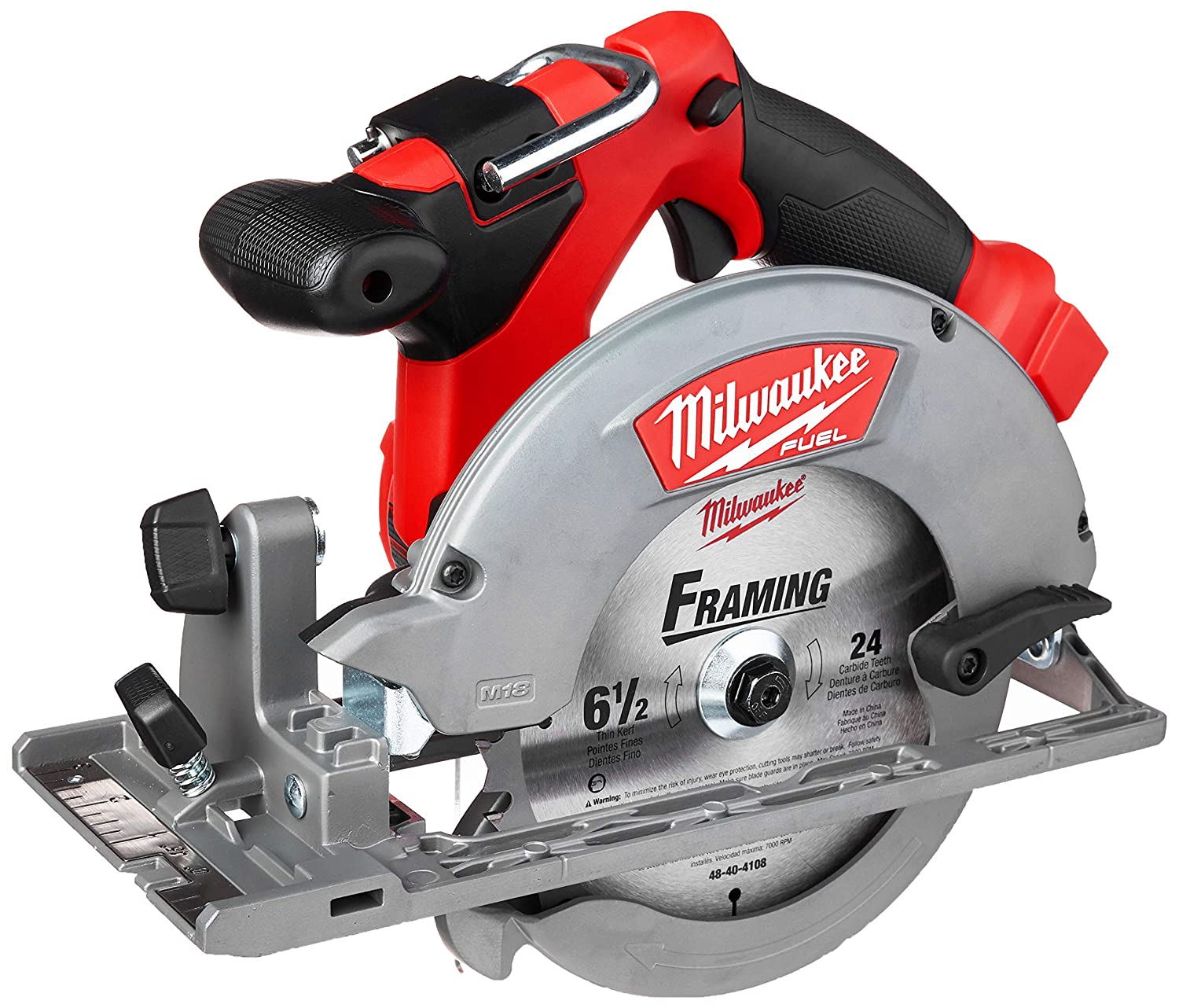Milwaukee Circular Saw Review
- Excellent battery life
- Tough and durable build quality
- Sky hook allows for safer tool storage
- Kicks back a few times
Circular Saws: Buying Guide
When it comes to purchasing a circular saw, there are a few factors to consider to ensure you get the right saw for your needs. This buying guide will take you through all these factors:
Things to Consider Before Buying a Circular Saw
Power
When choosing a Circular Saw, it is important to consider its power. This is measured in watts. Powerful motors can cut through tougher materials in less time, while weaker motors can struggle with harder materials. Generally, you should look for a motor that offers at least 1,500 watts of power.
Weight
The weight of the Milwaukee Circular Saw is an important consideration because it affects how comfortable and easy it is to maneuver. Heavier saws may be more durable and robust but they can also be difficult to move around when working on different projects. For most DIY projects or simple tasks, a saw that weighs no more than 10 pounds will be sufficient.
Circular Saws: Selecting a Blade Size
The size of the blade on your new Circular Saw is also a major factor to consider when making your purchasing decision. You want to make sure you’re getting a blade that’s appropriate for the type of cutting you’ll be doing. For example, a 7-1/4 inch blade is the most common size and can handle most woodcutting tasks, but if you need to make more precise cuts, a smaller blade like a 6-1/2 inch or 5-1/2 inch might be better. Just keep in mind that larger blades can be trickier to handle, so you’ll want to choose a size that’s appropriate for your skill level. Also, don’t forget that different blades are designed for different materials, so make sure you’re selecting the right blade for the job at hand.
Difference Between Corded and Cordless Circular Saws
Cordless circular saws
Cordless circular saws are powered by rechargeable batteries, which make them highly portable and convenient. They can be used in any location without a power source and are ideal for jobs that require mobility and flexibility. However, cordless saws have limited run time and can lose power as the battery drains. They may also have less power than corded saws, making them less suitable for heavy-duty jobs.
Corded circular saws
Corded circular saws offer consistent power, making them ideal for heavy-duty jobs that require sustained cutting power. These saws also tend to have higher performance and durability than cordless models, which means they can handle tougher materials and provide smoother, more accurate cuts. Finally, corded saws don’t require battery recharging, which means they can be used continuously without interruption.
Using a Circular Saw
- Wear appropriate safety gear such as eye protection, hearing protection, and gloves.
- Select the appropriate blade for the type of cut you need to make and ensure that it is securely attached to the saw.
- Adjust the cutting depth of the saw blade to the thickness of the material you are cutting.
- Set the angle of the saw blade to the desired angle if you need to make angled cuts.
- Clamp the material you are cutting securely to a stable work surface to prevent it from moving during the cut.
- Hold the saw with both hands, one on the handle and one on the trigger.
- Start the saw and wait for the blade to reach full speed before making contact with the material.
- Begin the cut by placing the blade at the edge of the material, making sure the blade is aligned with the cut line.
- Keep the saw level and use a steady, fluid motion to guide the saw along the cut line.
- As you near the end of the cut, be mindful of the offcut piece falling away and make sure it does not cause any hazards.
- Once the cut is complete, release the trigger and wait for the blade to come to a complete stop before setting the saw down.

